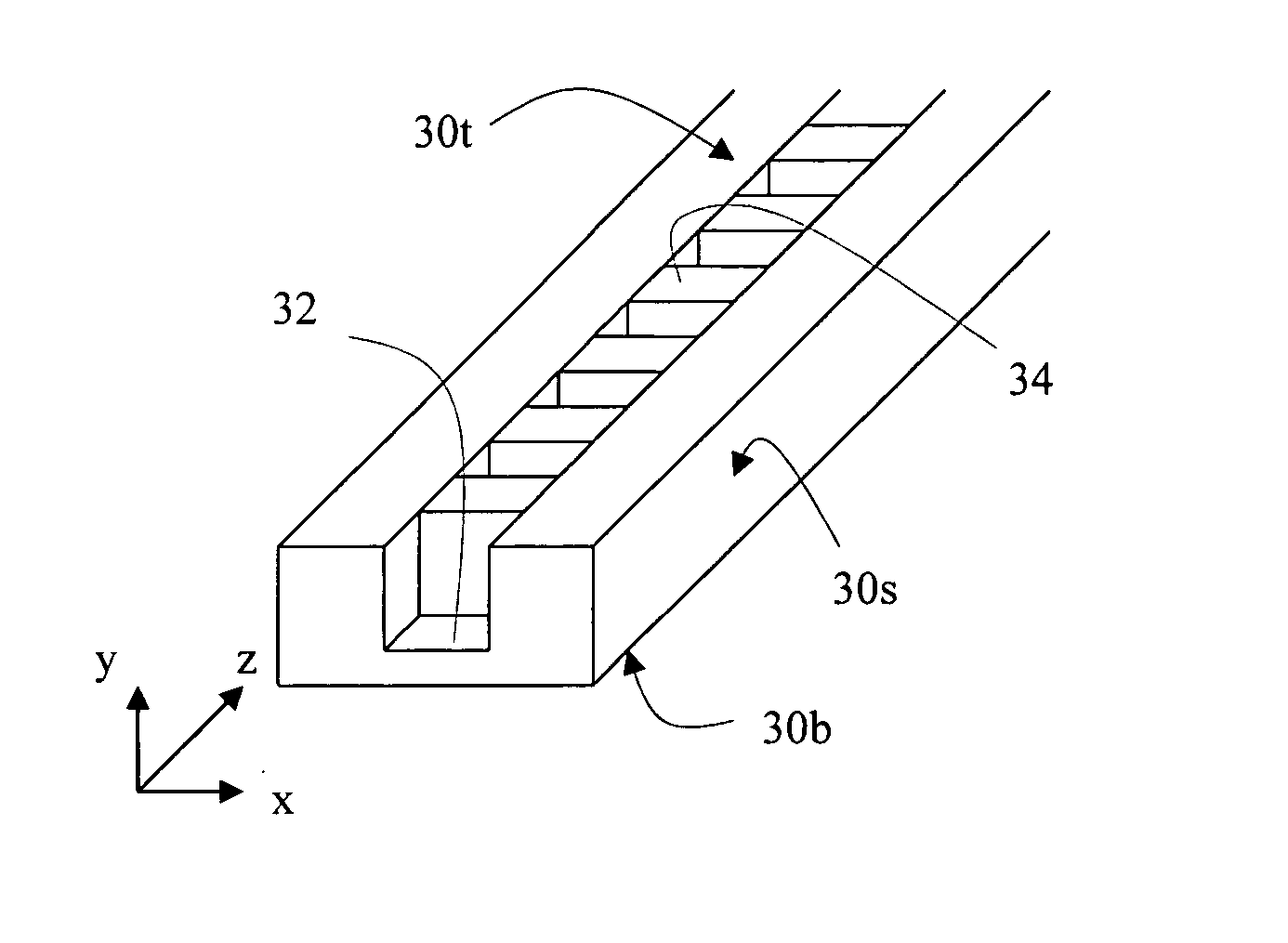Slow-wave structure for ridge waveguide
a technology of slow wave and ridge waveguide, which is applied in the direction of waveguides, delay lines, electrical equipment, etc., can solve the problems of increased loss, large rectangular waveguide dimensions, and large bulky rectangular waveguides, and achieve the effect of reducing the size of waveguides
- Summary
- Abstract
- Description
- Claims
- Application Information
AI Technical Summary
Benefits of technology
Problems solved by technology
Method used
Image
Examples
Embodiment Construction
[0022] As mentioned above, ridge waveguides have been proposed as a useful modification to resolve the size issue of the rectangular waveguides. To further resolve the reduced characteristic impedance problem of the ridge waveguide and to adequately reduce the phase velocity of the wave propagated within the ridge waveguide, the present invention provides a ridge waveguide having a slow-wave structure as shown in FIG. 3. The ridge waveguide has a hollow rectangular tube with a top wall 30t, two opposing side walls 30s and a bottom wall 30b. Preferably, the top, side and bottom walls 30t, 30s and 30b are fabricated from conductive or metallic materials, and the tube is filled with air. According to IRE standards, the coordination system as shown in FIG. 4 includes an x direction taken as the longer transverse dimension, a y direction taken as the shorter transverse dimension, and a z direction taken as the longitudinal dimension, along which the wave propagates within the ridge waveg...
PUM
| Property | Measurement | Unit |
|---|---|---|
| height | aaaaa | aaaaa |
| height | aaaaa | aaaaa |
| width | aaaaa | aaaaa |
Abstract
Description
Claims
Application Information
 Login to View More
Login to View More - R&D
- Intellectual Property
- Life Sciences
- Materials
- Tech Scout
- Unparalleled Data Quality
- Higher Quality Content
- 60% Fewer Hallucinations
Browse by: Latest US Patents, China's latest patents, Technical Efficacy Thesaurus, Application Domain, Technology Topic, Popular Technical Reports.
© 2025 PatSnap. All rights reserved.Legal|Privacy policy|Modern Slavery Act Transparency Statement|Sitemap|About US| Contact US: help@patsnap.com



